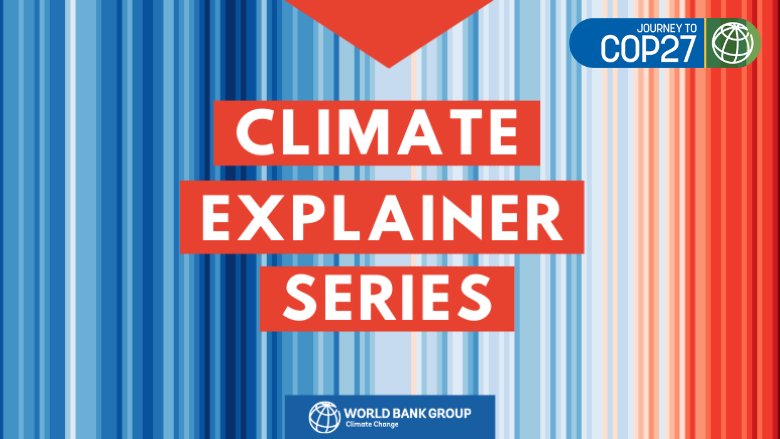What is results-based climate finance and how is it different from most international public climate finance?
About 95% of international public climate finance is provided upfront before a project is operational. Results-based climate finance (RBCF), on the other hand, is paid when results are achieved, and occasionally upon meeting interim milestones.
Results in RBCF can be defined as any milestone that indicates progress toward reducing greenhouse gas (GHG) emissions. Payments are made once pre-agreed targets have been met and, usually, once GHG emission reductions have been verified as real and additional – meaning they would not have occurred otherwise. The emission reductions are retained by the country that has generated them and can count towards that country’s national climate target (or NDC).
How does RBCF catalyze climate action?
Experience has shown that RBCF creates incentives for climate action. It accelerates investments in climate change mitigation, such as planting trees on degraded land, expanding access to clean energy, or making industrial and manufacturing processes more energy efficient. RBCF also provides incentives – payments for results – to strengthen domestic institutions, policies and infrastructure. It also spurs local communities, the private sector, and other stakeholders to participate in and benefit from climate action. And RBCF can complement more traditional international public climate finance by providing an additional revenue stream that can flow to communities and catalyze private sector investment.
RBCF effectively also rewards good project management because it is linked to achieving pre-agreed results, thereby also increasing the likelihood that a project will be successful.
About 95% of international public climate finance is provided upfront before a project is operational. Results-based climate finance (RBCF), on the other hand, is paid when results are achieved, and occasionally upon meeting interim milestones.
How does RBCF advance the goals of the Paris Agreement?
It does so in several ways:
First, the results-based process creates verified emission reductions that could count toward the NDC commitments of the country where the reductions were achieved. These emission reduction credits are also in alignment with Article 6 of the Paris Agreement. Countries can trade them as Internationally Transferred Mitigation Outcomes in international carbon markets that are governed by the rules of the Paris Agreement, as well as in voluntary carbon markets. Critically, RBCF helps build technical capacity in developing countries to participate in international carbon markets. For example, MRV (monitoring, reporting, and verification) systems used to verify RBCF emission reductions are also used to establish emission reductions in carbon markets.
RBCF is also an efficient way to deliver climate finance in accordance with Article 9 of the Paris Agreement, which specifies that developed countries shall provide financial resources to assist developing countries with climate change mitigation and adaptation. It can create income streams for delivering climate results that incentivize private sector investments, service provisions, and related project development and innovation. Such income streams also hold the potential to improve access to private finance. And since it helps build technical capacity, it also reduces the risks to engage in such projects, thereby helping mobilize critical private sector financing for climate action.
What are some of the other benefits?
Take the energy sector: RBCF programs can support markets for energy products through targeted incentives, such as increasing the supply of products at affordable prices or increasing demand for products through price reductions. For example, the World Bank’s Carbon Initiative for Development (Ci-Dev) provides results-based climate finance for projects that support off-grid solar markets and access to energy in low-income countries. Ci-Dev has supported programs that have installed an estimated 84,000 Solar Home Systems in households in Kenya and distributed over 700,000 solar lanterns distributed in Ethiopia.
Where does RBCF work best?
The World Bank has identified three areas that are particularly well-suited to RBCF financing:
Natural climate solutions focused on agriculture, forestry, land-use, oceans, and other sectors that support vital services and natural capital assets. For example, results-based climate payments could support the restoration of mangroves by generating Emission Reduction Credits and mobilizing additional private investments from carbon markets.
Sustainable infrastructure in energy, water, transport, urban, and other sectors that provide public goods to underpin broad-based, inclusive, and sustainable economic activity. For example, results-based climate payments could accelerate the phase-out of coal-fired power plants by monetizing, in the carbon markets, the Emission Reductions Credits generated by the transition away from coal. This monetization would help crowd in private finance, support additional clean energy capacity, and help local workers and affected communities access new economic opportunities in the transition to clean energy.
Fiscal and financial solutions that directly or indirectly provide or mobilize resources for climate action. Examples include carbon taxes, the removal of harmful subsidies, like fossil fuel subsidies, greening public financial institutions, or loans linked to sustainability. For example, crediting the implementation of policies that reduce emissions, like changes in end-user tariffs for electricity and natural gas. As tariffs increase, end-user demand changes, relative attractiveness of renewable versus fossil fuel-based power generation changes, and the reduced usage results in emissions reductions credits that can be monetized and support other development priorities.
Results-based climate payments could accelerate the phase-out of coal-fired power plants by monetizing, in the carbon markets, the Emission Reductions Credits generated by the transition away from coal.
What is the main source of RBCF at the World Bank?
A new partnership, Scaling Climate Action by Lowering Emissions (SCALE), will bring together all results-based climate financing programs currently housed at the World Bank and increase the amount of RBCF available to developing countries. SCALE will be a “one-stop shop” for all World Bank-administered RBCF and will be aligned with World Bank regional and country programs. Ultimately, SCALE will not just be a source of climate finance, but also serve as an instrument for policy dialogue and broader engagement to incentivize low carbon development.



